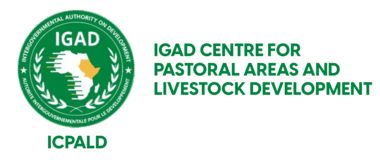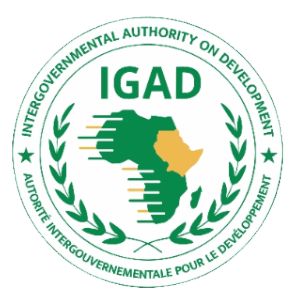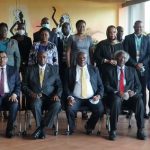Background
The Horn of Africa is one of the most vulnerable regions to climate change and climate variability. This is due to over reliance on rain fed agriculture and low adaptive capacity. Climate extremes such as droughts and floods, aggravated by climate change and variability, are being experienced more frequently over the region. This negatively affects food security and in some cases leads to famine and humanitarian crises.
Drought is a natural hazard that ranks first among all natural hazards due to its severity, duration, spatial extent and its severe consequences including loss of life, economic losses and social effects, as well as its long term impacts. It can happen everywhere on this globe, but in the Horn of Africa region, its impact and effect are complex and span many sectors of the economy, with the livestock sector being the hardest hit and most affected.
As a result of the devastating 2010/2011 drought, the IGAD Drought Disaster Resilience and Sustainability Initiative (IDDRSI) was adopted in the Summit held in 2014. They later called for the strengthening of early warning systems, and flexible development funding which factors in drought risks. It also called for the establishment of common triggers and protocols to escalate early warning to decision makers at local, national, and regional levels to mobilize early action; and for the institutionalization and investments into resilience building. IGAD continues to reinforce the actions of its Member States using them as a guide for complementary action on drought responses. There are quite a number of actions being undertaken by IGAD, its specialized institutions and through the IGAD Drought Disaster Resilience and Sustainability Initiative (IDDRSI) Platform to manage drought in the region.
To this end, and in acknowledgement of these devastating impacts of drought on livestock sector, ICPALD, utilizing funds from the African Development Bank through the Division of Agriculture and Environment commissioned a study to look into understanding and quantifying the social, economic and environmental impacts of drought on livestock sector as well as look into how livestock related interventions through IDDRSI investments contributed to building of resilience.
Objectives of the Workshop
The objective the workshop held on 11th – 13th November 2020 was to validate the draft study reports and their findings and provide recommendations and feedback for improving and finalizing the studies. The workshop aimed to share, discuss, and enrich the regional reports and the selected case studies on the status of drought impact on livestock sector, while strengthening the ability of decision makers to use these outcomes in their planning and decision making.
Proceedings
The opening session reiterated the importance of the study given the fact that data and statistics regarding the impact of drought on livestock sector needs to be gathered and improved to support better forecasting and early actions. It also acknowledged the fact that both the study handled by ICPAC on use of early warning information and the one handled by ICPALD are complementing each other in a manner that can better address the multiple effects of drought.
One regional report and three case study reports of the selected countries were presented by the regional consultant to the participants. The following were the key highlights and take home messages from these presentations including the comments and queries raised by the participants, which are to be incorporated into the final reports.
- The presentation of the regional report gave a background on the objectives, approach of the study and the region in general. Then the social, economic and environmental impacts were given at macro-level utilizing data on GDP, people affected and some estimation of losses and damage that occurred during the period covered (2011-2018). Thereafter, it focused on the livestock sector, assessing IDDRSI related livestock interventions and recommendations. Also briefly included was the situation in the selected countries, with geographical coverage and some estimation at macro level, though the linkages at micro-level surveyed at household level were not clearly spelt out.
- Historical records of drought showed us there were about 35 episodes of drought in the three selected countries. Participants asserted the need to learn lessons from this history. Learning from the past and the present while looking to the future can help in planning and developing of long term strategies to cope with drought. This can also help in improving our preparedness plans, monitoring and early warning systems.
- The overall estimates of damage and losses by sectors, in Kenya and Ethiopia for instance, indicated that agriculture in general was the worst affected sector, of which livestock sub-sector was the hardest hit among cropping, fisheries, forestry and agro-industry.
- The presentations of the country reports focused on conceptualization of drought, its impact on livestock and assessment of IDDRSI related interventions at household level.
Conclusion and Recommendations
The last day of the workshop was devoted to discussion and brainstorming on complementarities and synergies between the two studies and how their output can inform policy and planning processes at country and regional level. The very brief impression about the two studies tells that the one coordinated by ICPAC was on drought prevention while the other one coordinated by ICPALD was on drought impact on specific sector (livestock). Therefore, they complement each other in terms of using them as tools for enhancing awareness, strengthening the connections between the two studies and the need for inter-sectoral collaboration. Information and evidence provided by these studies will be prepared as policy briefs to inform policy.






